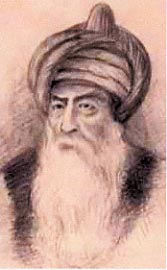Koca Mimar Sinan Agha
| Mimar Sinan |
|
|---|---|

A pencil portrait of Mimar Sinan
|
|
| Born | c. 1488/1490 Ağırnas, Karaman Eyalet, Ottoman Empire now Kayseri Province |
| Died | July 17, 1588 (aged 98) Istanbul, Ottoman Empire |
| Nationality | Ottoman |
| Occupation | Architect |
| Buildings |
Süleymaniye Mosque Selimiye Mosque Mehmed Paša Sokolović Bridge Mihrimah Sultan Mosque Mihrimah Mosque Kılıç Ali Pasha Complex Şehzade Mosque Haseki Hürrem Sultan Baths Haseki Sultan Complex Sokollu Mehmet Pasha Mosque Banya Bashi Mosque Church of the Assumption Hadum Mosque |
| Signature | |
 |
|
Koca Mi'mâr Sinân Âğâ (Ottoman Turkish: معمار سينان, "Sinan Agha the Grand Architect"; Modern Turkish: Mimar Sinan, pronounced [miːˈmaːɾ siˈnan], "Sinan the Architect") (c. 1489/1490 – July 17, 1588) was the chief Ottoman architect (Turkish: mimar) and civil engineer for sultans Suleiman the Magnificent, Selim II, and Murad III. He was responsible for the construction of more than 300 major structures and other more modest projects, such as schools. His apprentices would later design the Sultan Ahmed Mosque in Istanbul, Stari Most in Mostar, and help design the Taj Mahal in the Mughal Empire.
The son of a stonemason, he received a technical education and became a military engineer. He rose rapidly through the ranks to become first an officer and finally a Janissary commander, with the honorific title of ağa. He refined his architectural and engineering skills while on campaign with the Janissaries, becoming expert at constructing fortifications of all kinds, as well as military infrastructure projects, such as roads, bridges and aqueducts. At about the age of fifty, he was appointed as chief royal architect, applying the technical skills he had acquired in the army to the "creation of fine religious buildings" and civic structures of all kinds. He remained in this post for almost fifty years.
His masterpiece is the Selimiye Mosque in Edirne, although his most famous work is the Suleiman Mosque in Istanbul. He headed an extensive governmental department and trained many assistants who, in turn, distinguished themselves, including Sedefkar Mehmed Agha, architect of the Sultan Ahmed Mosque. He is considered the greatest architect of the classical period of Ottoman architecture and has been compared to Michelangelo, his contemporary in the West. Michelangelo and his plans for St. Peter's Basilica in Rome were well known in Istanbul, since Leonardo da Vinci and he had been invited, in 1502 and 1505 respectively, by the Sublime Porte to submit plans for a bridge spanning the Golden Horn. Mimar Sinan's works are among the most influential buildings in history.
...
Wikipedia
